Serena Williams’s Career at the U.S. Open? Well, It’s Complicated.
A quarter-century ago, Serena Williams entered tennis, grandly and regally and without inhibition. Now, after years of rueful speculation, we have a sense of how it will all end. Sort of. Maybe. Barring the unlikely—a caveat one must always include with Serena—she will conclude her unrivaled career in New York at the 2022 U.S. Open.
For any athlete, knowing when to say when is an excruciating exercise. All the more so in an individual sport, where there is no contract to play out, no management to make the choice for you. And for individual athletes, who travel a circuit and have no home field or court, there is also the issue of where to say when. In this case, Serena, four weeks from turning 41, has chosen to take out her stringed instrument and play her final grace notes at a venue that encapsulates her operatic career.
In some ways, it couldn’t be more fitting. The U.S. Open is not only Serena’s home Grand Slam, but it also marked her opening salvo, the site of the first of the 23 majors she would win. She’s taken the New York title six times in all and, at a venue christened in Billie Jean King’s honor, has won more matches here (106 heading into this week) than at any other tournament.
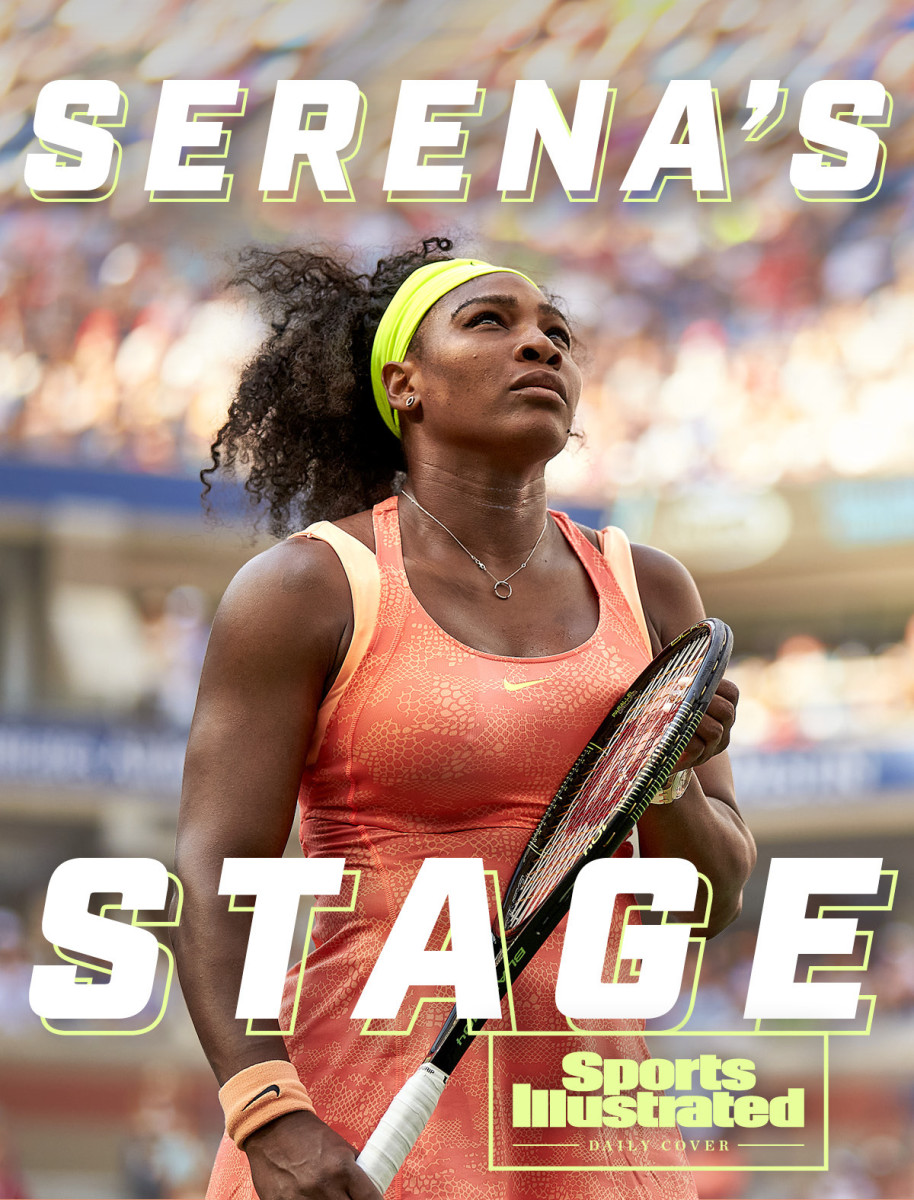
Yet the U.S. Open has also been the site of what we might charitably call some of Serena’s most challenging moments. There have been stinging defeats. There have been moments in which she was wronged. There have been moments in which she was in the wrong. Serena’s relationship with the most important tournament in her country is a Janus face, an alteration of mood. Her status update might read: it’s complicated.
It has, remarkably, been two dozen years since Serena made her U.S. Open debut. While tennis courts are, of course, necessarily flat, her experiences on the U.S. Open courts have been undulating, filled with decided highs and lows. A brief look down memory lane:
1998
Backstory: A year prior, Serena’s big sister, Venus, had reached the U.S. Open finals, a run punctuated by fearless tennis but perhaps best recalled for an ugly chest-bump incident with Romanian Irina Spirlea, a bit of foreshadowing that the Williams sisters' party-crashing would be met in some quarters with some ugly resistance. In her New York debut, Serena, 16, won her first two matches, showing off her precocious power. And who did she meet in the third round? Spirlea. Serena lost in three sets but served notice (at 110 mph) that she was already a formidable player.
1999
Venus Williams was, in the eyes of many, the favorite to win the U.S. Open and consecrate the House of Williams. Right prediction, wrong sister. At the last tennis major played in the 20th century, Serena, 17, won the title. And emphasis on won, as she beat a string of top players in succession (and in three sets)—Kim Clijsters, Conchita Martinez, Monica Seles and Lindsay Davenport, all of whom would end up in the Hall of Fame. In the final, Serena toppled top-seeded Martina Hingis, pocketed $750,000, and a dynasty had begun.
2001
The comprehensiveness of the Williams Family Tennis Takeover was such that the U.S. Open moved the women’s title to a night session, maximizing the television audience. The sisters validated this decision by both reaching the final. Ahead 3–1 in Grand Slam titles, Venus defeated Serena in straight sets, less a competitive match than a prime-time acknowledgment that this tableau—two sisters raised in the same Compton home, batting back titles as if in a playful tennis rally—marked the most remarkable story in sports.
2002
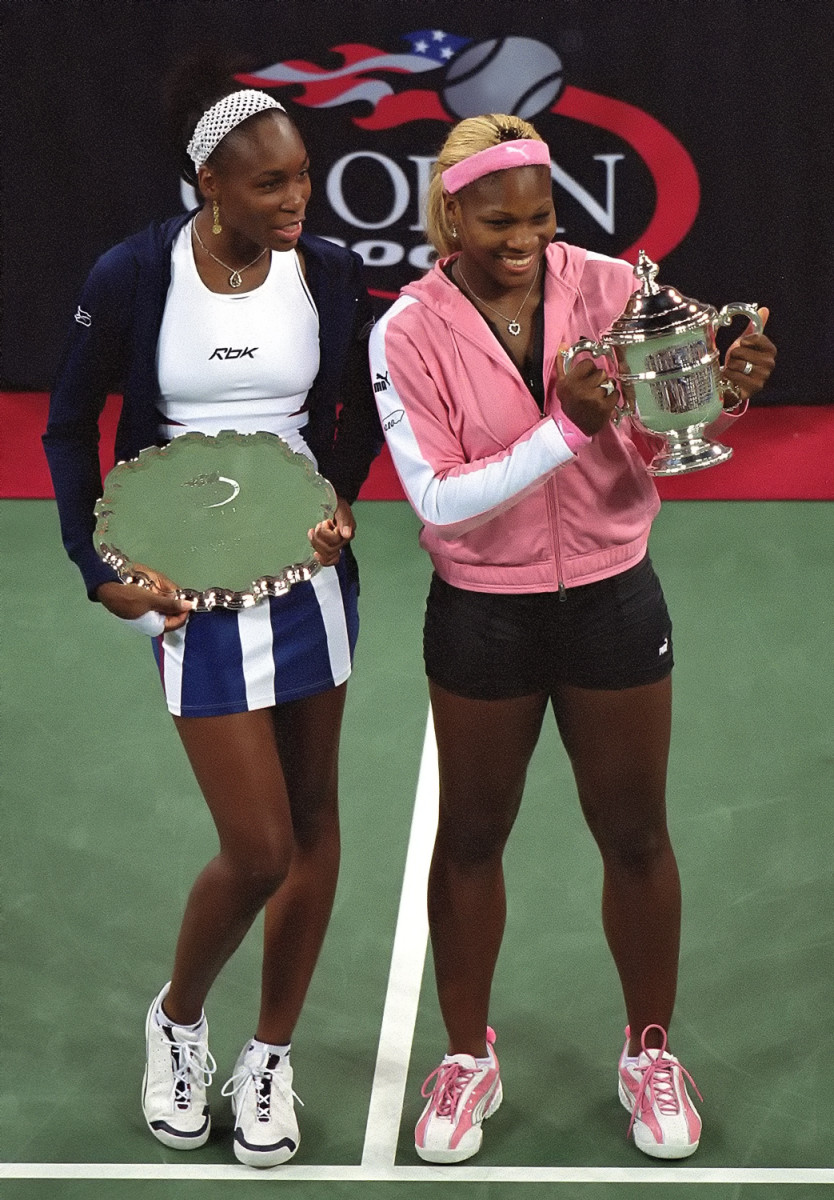
Having grown increasingly comfortable with the idea that birth order could be subverted, and a big sister could be defeated by a little sister without exacting a price on the relationship, Serena triumphed over Venus this time in another family affair. It marked her third straight major and, suddenly, she and her sister had four Slam titles apiece.
2004
Playing what might have passed for a rival (Jennifer Capriati) in the quarterfinals, Serena hit a series of shots that landed on the line or inside the line but were called out. Whether this was incompetence or something more nefarious (as many suggested), these missed calls loomed large as Capriati won the match, 2-6, 6-4, 6-4. These errors catalyzed the tennis-wide push for instant replay. While it was cold comfort that it came at Serena’s expense, you might say she played a pioneering role in getting tennis up to technological speed.
2008
Back from the Olympic Games, Serena was in top form, beating Venus in the quarterfinals and then Jelena Jankovic of Serbia in the final to win her third U.S. Open title.
2009
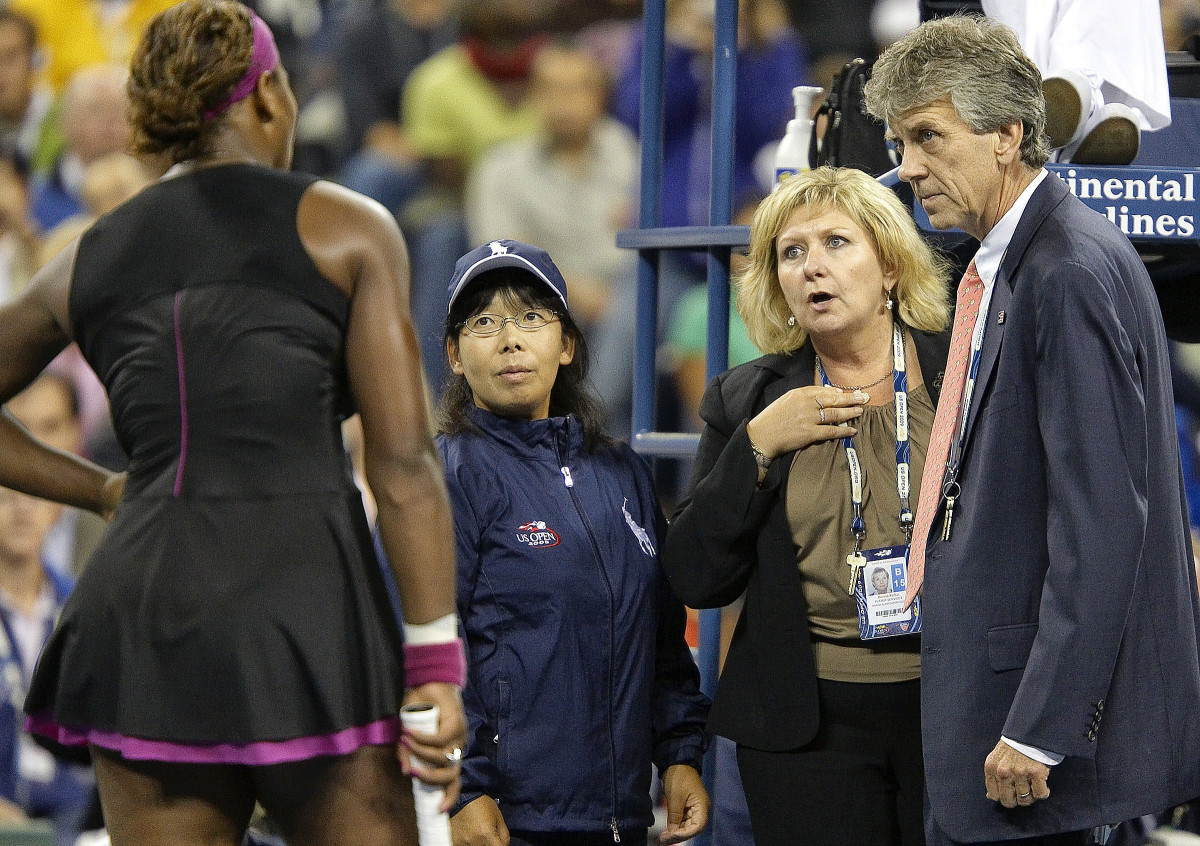
A decade after her breakthrough, having already wowed crowds by wearing cowboy boots onto the court for early matches, Serena met Clijsters in the semifinals for a chance to defend the title. A top player returning from maternity leave, Clijsters was playing as well as ever and won over a crowd inspired by her backstory.
Late in a tightly contested match, Serena was called for a foot fault. She turned to the line judge making the call, and courtside microphones caught her threatening the official. “I swear to God I’ll f------ take the ball and shove it down your f------ throat.” When the lineswoman reported this threat to the chair umpire, Serena denied saying anything untoward. (“I didn’t say I would kill you! Are you serious?”) She did and she was. The outburst resulted in a point penalty and, in turn, the loss of the match. Williams was later fined $175,000 and placed on two years’ probation.
2011
Returning to the U.S. Open for the first time since her ignominious 2009 exit, Serena blitzed her way to the final. There she met Australian Sam Stosur. In retrospect, this is a match Serena likely wishes she had back. She turned in a surprisingly vacant performance, one punctuated by another controversy. Called for a “hindrance” after yelling out during a point, Serena argued to chair umpire Eva Asderaki, “You ever see me walking down the hall, look the other way. Because you’re out of control—totally out of control. You’re a hater and you’re unattractive inside.” Serena lost 6–2, 6–3.
2012
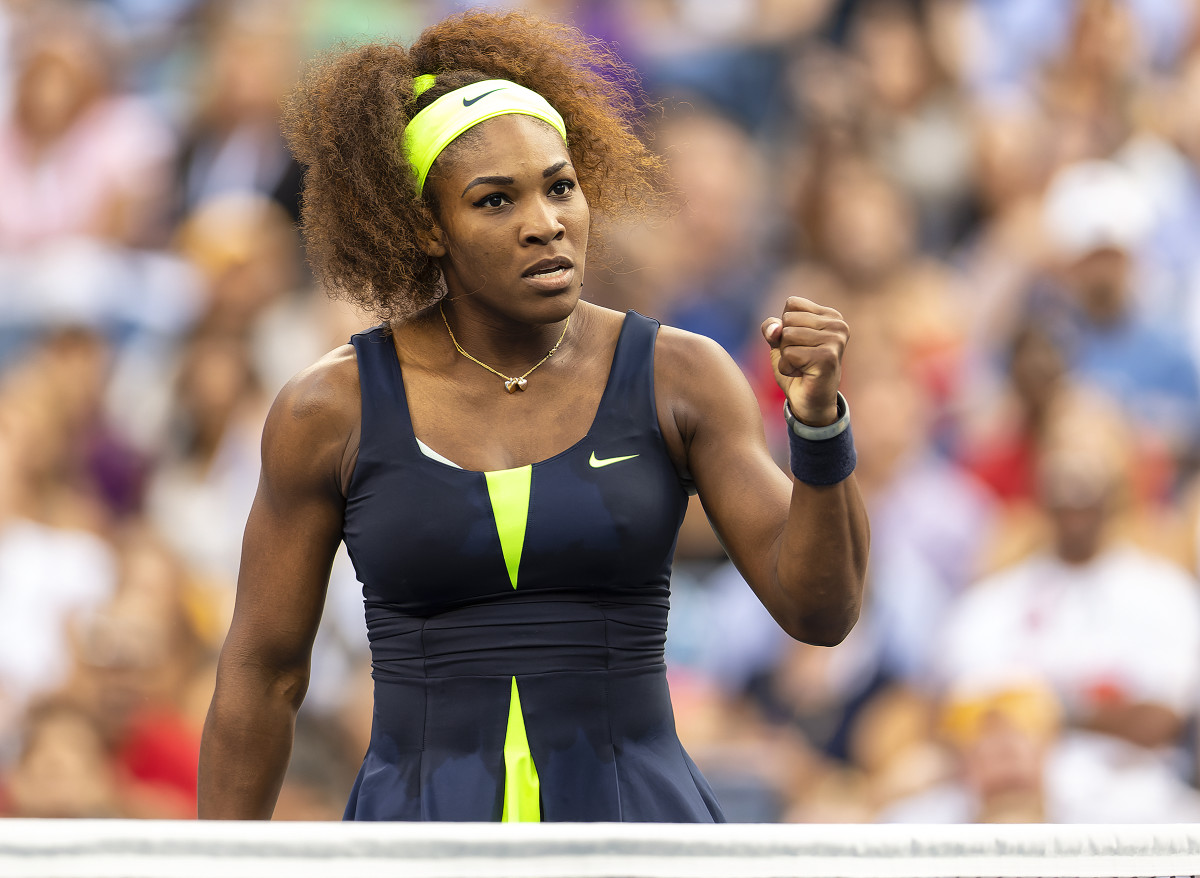
Fresh from winning the Wimbledon title and Olympic gold medal, playing perhaps the most elevated tennis of her career—which, of course, is saying something—Serena won seven matches in one of two ways: She was either unplayably good and brutalized her opponents or showed off her will of steel and refused to leave the court anything other than the winner. Such was the case in the final, when she betrayed defiance to match her ball-striking and beat Victoria Azarenka, 6–2, 2–6, 7–5.
2013
Another U.S. Open, another vintage Serena performance, another strong-willed defeat of Azarenka in the final, 7–5, 6–7, 6–1.
2014
For only the time in her career, Serena three-peated at a Grand Slam, winning for the third (and likely final) time against her close friend, Caroline Wozniacki, in the final. Her prize money and bonus for that year’s best hard-court season? More than $3.95 million, an increase of almost five times from her first title—a testament to the growth of the sport driven, not least, by the appeal and leverage of the Williams sisters.
2015
In perhaps the most dominant year of her career, Serena came to New York having won the first three legs of the Calendar Slam, trying to become the first woman since Steffi Graf in 1988 to pull off tennis’s ultimate feat. In the quarterfinals, she beat Venus in what was less a tennis match than a sold-out celebration for two transformative, path-breaking sisters. Serena won in three sets. (It was hard to imagine Venus thwarting her sister’s run at history.) That out of the way, the stage appeared set; the celebration plans were proceeding apace … but Serena succumbed to the weight of the occasion against 43rd-ranked Roberta Vinci of Italy. Despite a home crowd willing her to win, Serena simply could not summon her usual wand work or mental reserves, and fell 6—2, 4—6, 4—6.
2018
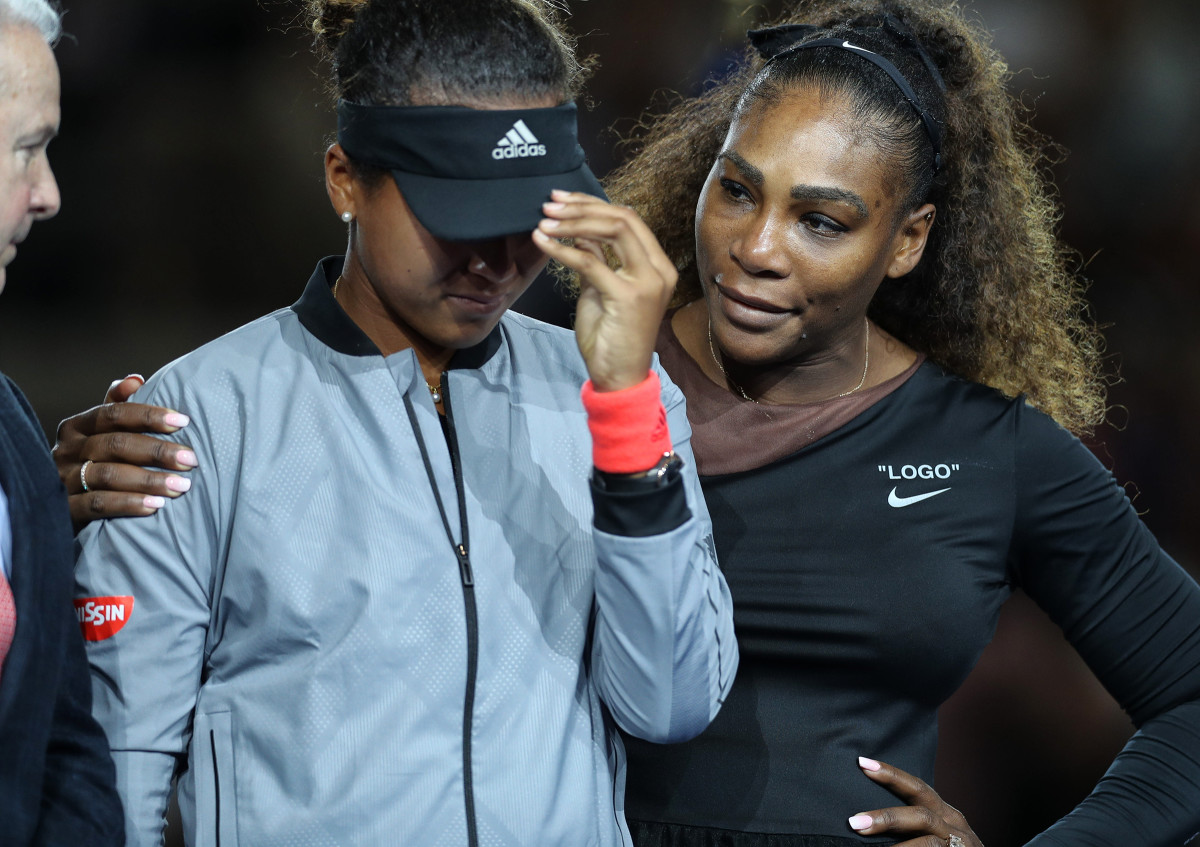
Her first U.S. Open as a mother, Serena supplemented her crowd-favorite status with sentimental-favorite status. In the final, she faced Naomi Osaka, one of, by now, a vast cohort of players who cited Serena as their inspiration for playing tennis. It was Serena who showed more nerves, however. After a series of infractions that included a coaching violation and smashing a racket, Serena was docked a point by chair umpire Carlos Ramos, and a tennis match had devolved into an international cause célèbre. For some, the whiff of racism and sexism hung unmistakably. For others, Serena was simply being penalized for transgressions she had committed. For all the polarization and hot takes, no party covered themselves in glory that day—except Osaka, who won her first major, 6–2, 6–4.
2019
Serena won six matches and, two sets away from her long-avowed goal of tying Margaret Court’s record of 24 majors, again matched up in the final against a young opponent who had never been in the situation. In a match free of drama, but also relatively free of intensity, Serena, then just a few weeks shy of her 38th birthday, was simply outplayed by Bianca Andreescu of Canada, a slugger half her age, 6–3, 7–5.
And now, we arrive at 2022
As much as one underestimates Serena Williams at their peril—a theme that has echoed throughout her entire career—it’s hard to imagine her contending for the title. She’s won precisely one match over the course of the past year. And a combo platter of injuries and outside pursuits have prevented her from committing herself fully to tennis. Nevertheless, this will, rightly, be an absolute love-in for Serena. All the more so if she can fire up a few matches for the memory banks and provide a glimpse of the past magic, that alloy of power, accuracy, strategy and determination.
Serena Williams is an unprecedented athlete. She is also perhaps an unprecedentedly complicated athlete. In that sense, it’s fitting she concludes her glorious career—game, set, match—at a venue filled with so many personal ghosts and so much personal success.
More U.S. Open Coverage:
